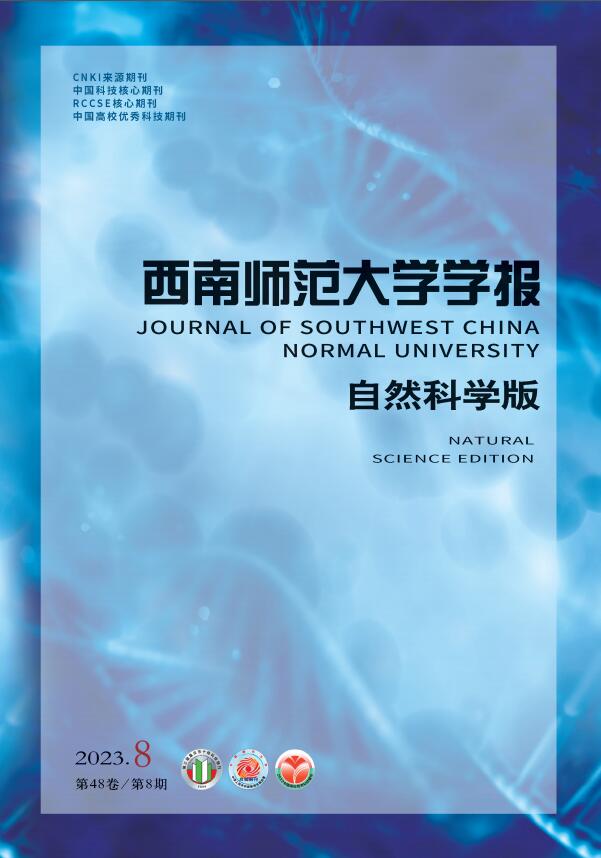-
本文研究非线性复系统
的Hermite正定解,其中m≥2是正整数,B,C ∈Cn×n是Hermite矩阵且C正定.当m=2时,方程来源于Markov链的噪声Wiener-Hopf问题,在控制理论、动态规划、随机过滤等领域有广泛应用,许多学者对其求解方法和解的特征进行过研究[1-5].文献[6]讨论了一类线性系统的M自共轭解;文献[7]给出了二次系统AX 2+ BX + C = 0的最大解X 1和最小解X 2(即X 1特征值的模均大于X 2特征值的模)存在的充分条件;文献[8]在m=2,B =b>0且C对称正定时讨论了方程(1)的正定解;文献[9]在m=2,B是对角阵且C是非奇异M矩阵时讨论了一类非对称代数黎卡提方程(1)解的性质;文献[10-11]分别研究了一类Lipschitz非线性连续时滞系统基于非均匀采样测量的网络化状态估计问题,及具有状态时延的网络控制系统的有限时间镇定问题;文献[12-14]分别研究了二次系统X T DX + AX + XT B + C = 0,AXA = XAX和A 0+ A 1 X + A 2 X 2= X的一般解;文献[15]采用线性矩阵方程迭代法得到了一个二元非线性差分系统正平衡点的稳定性;文献[16]给出了对称非线性系统X - A * X -1 A + B * X -2 B = I存在Hermite正定解的充分条件及正定解范围.然而,目前对于高阶非对称系统的结构解研究甚少,在此本文讨论m次复系统(1)的Hermite正定解的存在性及其求解算法.
用λmax(A),λmin(A)分别表示Hermite矩阵A的最大和最小特征值.对于正定矩阵A,B,用A > B表示A - B是正定的. A *表示复矩阵A的共轭转置.
HTML
-
引理1 非线性复系统(1)存在Hermite正定解的充要条件是BC = CB.
证 如果方程(1)存在Hermite正定解X,则Xm- C = BX,两边取共轭转置可得
于是
反之,如果BC = CB,则B,C可同时酉对角化,即存在酉矩阵U ∈Un×n,使得
其中
令Y = U * XU,则方程(1)等价于
取Y =diag(y1,y2,…,yn),则方程(3)有正解Y > 0等价于下列n个代数方程均有正实根:
令f(y)=ym-by-c(c>0),则由f(0)=-c < 0,f(y)→+∞(y→+∞),以及f′(y)= mym-1-b可知f(y)在(0,+∞)至多存在一个驻点,因此∀b∈
$\mathbb{R}$ ,f(y)=0总存在唯一正根$\tilde{y}$ .可见代数方程(4)均有唯一正解,从而方程(1)存在Hermite正定解.证毕.下面针对矩阵B分别为正定、负定、不定3种情况,讨论矩阵方程(1)的正定解的迭代求解方法,主要论述不同情况下迭代格式的构造及收敛性问题.
-
引理2 设B,C ∈Cn×n都是正定矩阵,b1=λmax(B),bn=λmin(B),h1=λmax(C),hn=λmin(C),则方程xm-b1x-h1=0与xm-bnx-hn=0均存在唯一正根α,β,且β≤α.
证 正根α,β的存在唯一性由引理1已证,下面证明β≤α.
由xm-b1x-h1=0得
$x=\sqrt[m]{{{h}_{1}}+{{b}_{1}}x}$ ,构造数列则{uk}严格递增且uk≤α.因此{uk}收敛,且由(5)式得
$\mathop {\lim }\limits_{k \to + \infty } {u_k} = \alpha $ .同理,构造数列则{vk}严格递增且vk≤β.因此{vk}收敛,且由(6)式得
$\mathop {\lim }\limits_{k \to + \infty } {v_k} = \beta $ .另一方面,由(5)式和(6)式可知vk≤uk,根据极限保号性立即可得β≤α.证毕.现考虑矩阵方程
其中B,C ∈Cn×n是正定矩阵且BC = CB.
引理3 方程(1)与(7)具有相同的且与B可交换的正定解.
证 若X是方程(1)的正定解,则由引理1知BX = XB,因此B,X能同时酉对角化,即存在酉矩阵V ∈Un×n,使得B = VDBV*,X = VDXV*,于是
即X也是方程(7)的与B可交换的正定解.反之,若X是方程(7)的且与B可交换的正定解,则由
${\mathit{\boldsymbol{B}}^{\frac{1}{2}}}\mathit{\boldsymbol{X}}{\mathit{\boldsymbol{B}}^{\frac{1}{2}}} = \mathit{\boldsymbol{BX}}$ 可知X也是方程(1)的正定解.证毕.引理4 设α,β是引理2给出的正数,则矩阵方程(7)在Ω=[βI,αI]内必存在正定解.
证 建立矩阵函数
则由b1=λmax(B),bn=λmin(B),h1=λmax(C),hn=λmin(C),∀X ∈Ω,有
且
因此F(Ω)
$ \subset $ Ω.根据Brouwer不动点定理,X =F(X)在[βI,αI]内存在不动点$\mathit{\boldsymbol{\tilde X}}$ ,即方程(7)在Ω内必存在正定解.证毕.利用函数(8)构造迭代格式
定理1 设m≥2是正整数,B,C ∈Cn×n是正定矩阵,且BC = CB,α,β是引理2给出的两个正数,则∀X 0=sI ∈Ω,β≤s≤α,迭代式(9)总收敛到方程(1)的正定解.
证 由引理1的证明过程可知,B,C具有分解式(2),令Y = U * XU,代入方程(7)可得相应的迭代格式
于是(9)式收敛等价于(10)式收敛.当X 0=sI (β≤s≤α)时,Y 0=sI,这时迭代式(10)等价于
根据引理2的证明过程可知,数列{yk(i)}(i=1,2,…,n)均收敛到一个正实数,从而(9)式收敛到方程(1)的正定解.证毕.
根据定理1的证明过程可得方程(1)的Hermite正定解表达式.
推论1 设m≥2是正整数,B,C ∈Cn×n是正定矩阵,且BC = CB,则矩阵
是方程(1)的正定解,其中U由分解式(2)所给出,pi(i=1,2,…,n)是数列(11)的收敛点.
证 因为pi是数列(11)的收敛点,所以pim-bipi-ci=0(i=1,2,…,n).把矩阵(12)代入方程(1)左边,得
即
$\mathit{\boldsymbol{\tilde X}}$ 是方程(1)的正定解.注1 根据前面的讨论可知,由定理1或推论1求出的正定解
$\mathit{\boldsymbol{\tilde X}}$ 满足矩阵不等式βI≤$\mathit{\boldsymbol{\tilde X}}$ ≤αI,其中α,β是引理2给出的正数.注2 当矩阵阶数n较大时,对矩阵B,C进行同时酉对角化较为困难,因此不便利用推论1中的公式(12)来计算方程(1)的正定解.此时采用迭代公式(9)计算,只需估计α或β的近似值就可选取初始矩阵X 0=αI或X 0=βI,大大降低计算难度.实际上根据引理2知
因此,可选取X 0=(
$\sqrt[m]{{{b_1}\;\sqrt[m]{{{h_1}}} + {h_1}}}$ ) I作为迭代式(9)的初始矩阵. -
首先指出,当B是负定矩阵,C是正定矩阵时,引理2的结论仍然成立.事实上,当B < 0,C > 0时,有
令g(x)=xm+dx-h(d,h>0),则由g(0)=-h < 0,
$\mathop {\lim }\limits_{x \to + \infty } g\left( x \right) = + \infty $ ,以及∀x∈(0,+∞),g′(x)=mxm-1+d>0,可知方程xm-b1x-h1=0与xm-bnx-hn=0分别存在唯一正根μ,γ.因此有μm=b1μ+h1,γm=bnγ+hn.倘若γ>μ>0,则γm>μm>0,所以有另一方面,(h1-hn)≥0,bn(μ-γ)≥0⇒(h1-hn)+bn(μ-γ)≥0,与(13)式矛盾,从而γ≤μ.这时,为迭代求解方程(1),建立拟牛顿迭代格式如下:
定理2 设m≥2是正整数,B < 0,C >0且BC = CB,则∀X 0=tI,γ≤t≤μ,迭代式(14)总收敛到方程(1)的正定解.
证 类似于定理1的证明过程,考虑到方程ym+diy-ci=0(di,ci>0)的牛顿迭代
所产生的数列{yk(i)}(i=1,2,…,n)分别收敛到区间(
$0, \frac{{{c_i}}}{{{d_i}}}$ )内唯一正实数,且当γ≤t≤μ时t∈ ($0, \frac{{{c_i}}}{{{d_i}}}$ ),于是迭代式(14)总收敛到方程(1)的正定解.注3 由定理2可知,当B < 0,C >0且BC = CB时,方程(1)的正定解
$\mathit{\boldsymbol{\hat X}}$ 满足不等式γI ≤$\mathit{\boldsymbol{\hat X}}$ ≤μI,其中μ,γ分别是xm-b1x-h1=0与xm-bnx-hn=0的唯一正根. -
当B是不定矩阵,C是正定矩阵时,不妨设
利用前面1.2的方法,容易知道引理2的结论仍然成立.也就是说方程xm-b1x-h1=0与xm-bnx-hn=0分别存在唯一正根σ,τ,且τ≤σ.这时可把方程(1)改写为
根据方程(16)建立新的拟牛顿迭代格式
定理3 设m≥2是正整数,B是Hermite矩阵,C > 0且BC = CB,则∀X 0=tI,τ≤t≤σ,迭代式(17)总收敛到方程(1)的正定解.
证 由前面的讨论可知,我们只需考虑方程ym-biy-ci=0(ci>0,bi∈
$\mathbb{R}$ )的牛顿迭代对于初值y0(i)=t的收敛性.
当bi < 0时,由(15)式可知对∀t∈
$\left( 0, \frac{{{c}_{i}}}{\left| {{b}_{i}} \right|} \right)$ ,迭代式(18)收敛;当bi=0时,显然对∀t∈(0,
$\sqrt[m]{{{c}_{i}}}$ ),迭代式(18)收敛;当bi>0时,由注2可知对∀t∈(0,
$\sqrt[m]{{{b}_{i}}\ \sqrt[m]{{{c}_{i}}}+{{c}_{i}}}$ ),迭代式(18)收敛.又因为
其中bn=λmin(B) < 0,hn=λmin(C)>0.令δ=min
$\left\{ \frac{{{h}_{n}}}{\left| {{b}_{n}} \right|}, \sqrt[m]{{{h}_{n}}} \right\}$ ,则当t∈(0,δ)时,迭代式(18)的所有数列{yk(i)}都收敛.所以选取X 0=tI,迭代式(17)总收敛到方程(1)的正定解.
1.1. B为正定矩阵的情形
1.2. B为负定矩阵的情形
1.3. B为不定矩阵的情形
-
例1 给定两个n阶Hermite正定矩阵
试求方程X 5- BX - C = 0的Hermite正定解.
解 对任意正整数n直接验证可知BC = CB,因此由引理1知方程X 5- BX - C = 0存在Hermite正定解.
对于B > 0,C > 0,可采用(9)式建立迭代格式.根据Getschgorin圆盘定理,B的特征值bi分布在圆盘|λ-2|≤2内的实轴上,C的特征值ci分布在圆盘|λ-5|≤2.4内的实轴上.由于
$\sqrt[5]{2\cdot \sqrt[5]{5}+5}\approx 1.5$ ,根据定理1的注2,迭代初始矩阵可选取为X 0=1.5 I,因此有当n=5时,计算结果为
用error=‖ Xk5- BXk- C ‖∞表示第k次近似解的余项,iter表示迭代次数,time表示运行时间,当n=100,500,1 000时,计算结果见表 1.
取
$\mathit{\boldsymbol{\widetilde B}}$ =- B,则$\mathit{\boldsymbol{\widetilde B}}$ 是一个Hermite负定矩阵.对于$\mathit{\boldsymbol{\widetilde B}}$ < 0,C > 0可采用迭代(14)来求方程X 5-$\mathit{\boldsymbol{\widetilde B}}$ - C = 0的正定解.根据B,C的特征值分布和定理2证明过程中(15)式可知,迭代初始矩阵可选取为X 0=1.25 I,因此有当n=5时,计算结果为
当n=100,500,1 000时,计算结果见表 1.
表 1结果显示,本文所给3种迭代用较少迭代次数均能达到预设误差精度,表明敛速较高.
给出一个不定矩阵如下:
对于不定矩阵
$\mathit{\boldsymbol{\mathord{\buildrel{\lower3pt\hbox{$\scriptscriptstyle\frown$}} \over B} }}$ 及C > 0,可采用迭代式(17)来求方程X 5-$\mathit{\boldsymbol{\mathord{\buildrel{\lower3pt\hbox{$\scriptscriptstyle\frown$}} \over B} X}}$ - C = 0的正定解.由于$\mathit{\boldsymbol{\mathord{\buildrel{\lower3pt\hbox{$\scriptscriptstyle\frown$}} \over B} }}$ ,C的特征值范围是-1.5≤λ($\mathit{\boldsymbol{\mathord{\buildrel{\lower3pt\hbox{$\scriptscriptstyle\frown$}} \over B} }}$ )≤2.5,2.6≤λ(C)≤7.4,根据定理3的证明过程可知,迭代初始矩阵可选取为X 0=δI,其中δ=min$\left\{ {\frac{{{h_n}}}{{\left| {{b_n}} \right|}}, \sqrt[m]{{{h_n}}}} \right\} \approx {\rm{min}}\left\{ {\frac{{2.6}}{{1.5}}, \sqrt[5]{{2.6}}} \right\} \approx 1.2$ ,因此有当n=5时,计算结果为
当n=100,500,1 000时,计算结果见表 1.
-
非线性系统(1)是一个非对称m次矩阵方程,本文在B,C为Hermite矩阵且C正定的条件下讨论了它的正定解.给出了方程(1)有正定解的充要条件及其解的存在区间.针对矩阵B分别为正定、负定、不定3种情况建立相应的迭代格式,并结合代数方程的特点证明了它们的收敛性.其中迭代式(9)充分利用了迭代序列的严格单调性,迭代式(14)根据矩阵函数求导恒正的特点建立了拟牛顿算法,迭代式(17)通过把BX转化成
${\mathit{\boldsymbol{X}}^{\frac{1}{2}}}\mathit{\boldsymbol{B}}{\mathit{\boldsymbol{X}}^{\frac{1}{2}}}$ 克服了对不定矩阵B开方的障碍.根据3种迭代的特点分析给出初始矩阵的选取方法.数值算例表明,本文所给方法对求解非线性系统(1)可行、有效.






 DownLoad:
DownLoad: